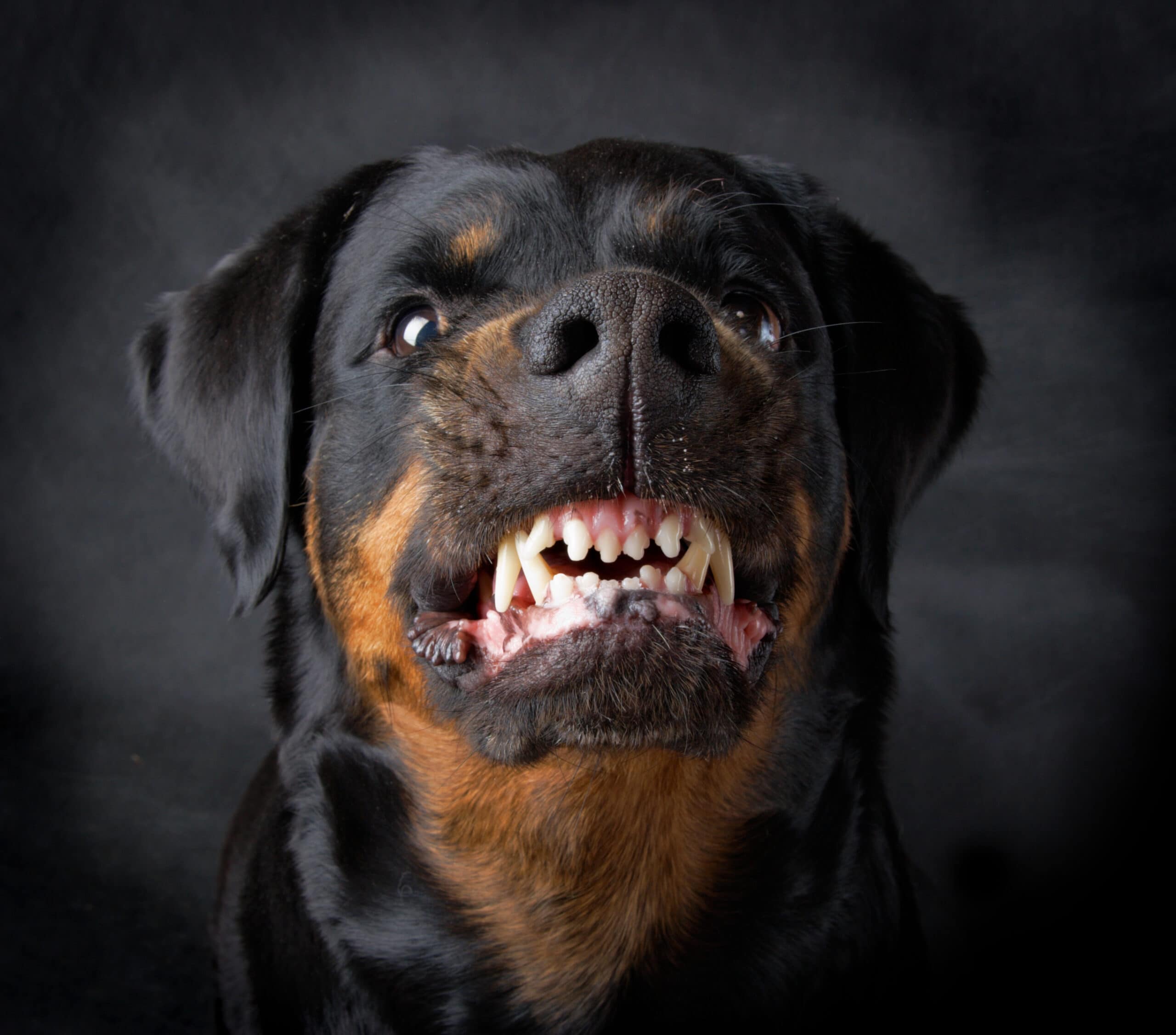If you want one or want to avoid one, you need to know – which is the most dangerous dog?
Dogs are often referred to as “man’s best friend,” but not all dogs are friendly and harmless. In fact, some breeds are known to be more aggressive and dangerous than others.
Understanding aggression in dogs is key to answering this question.
Aggression can be caused by various factors such as genetics, training, socialization, and environment.
Some breeds have been selectively bred for specific traits like aggression, which can contribute to their dangerous behavior.
While there is no definitive answer to which dog breed is the most dangerous, there are several breeds that are often mentioned in discussions on this topic.
These breeds include the Pit Bull, Rottweiler, German Shepherd, Doberman Pinscher, and the Siberian Husky.
However, it’s important to note that not all dogs of these breeds are dangerous, and not all dangerous dogs belong to these breeds.
Table of Contents
Understanding Aggression in Dogs
Aggression is a common behavior in dogs that can be triggered by various factors, including fear, territorial instincts, and lack of socialization.
It is important for dog owners to understand the different types of aggression and how to prevent or manage them.
Types of Aggression
There are several types of aggression in dogs, including:
- Territorial Aggression: This type of aggression is triggered when a dog feels that his territory is being invaded or threatened. It is common in dogs that are not properly socialized or trained.
- Fear Aggression: Fear aggression is triggered when a dog feels threatened or scared. It is common in dogs that have had traumatic experiences or lack socialization.
- Dominance Aggression: Dominance aggression is triggered when a dog feels the need to assert his dominance over other dogs or humans. It is common in untrained or poorly socialized dogs.
- Protective Aggression: Protective aggression is triggered when a dog feels the need to protect his family or property. It is common in dogs that are not properly trained or socialized.
Prevention and Management
Preventing aggression in dogs requires proper socialization and training.
Dogs that are exposed to different people, animals, and environments from an early age are less likely to develop aggressive tendencies.
Training methods that use positive reinforcement are more effective than punishment-based methods.
If a dog displays aggressive behavior, it might be a good idea to seek professional help from a veterinarian or animal behaviorist.
They can help identify the underlying cause of the aggression and develop a management plan that is tailored to the dog’s specific needs.
Most Dangerous Dog Breeds – Which is the Most Dangerous Dog?
When it comes to dangerous dog breeds, there are several that come to mind.
While almost any dog has the potential to be dangerous, some breeds are more prone to aggressive behavior than others.
In this section, we will discuss some of the most dangerous dog breeds.
Pit Bulls
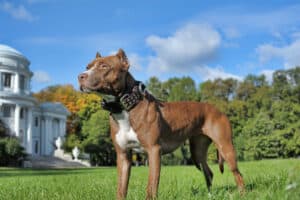
Pit Bulls are perhaps the most notorious of all dangerous dog breeds.
According to The Smart Canine, Pit Bulls are responsible for more fatal dog attacks in the United States than any other breed.
They are powerful dogs with a strong prey drive, which can make them dangerous in the wrong hands.
Rottweilers
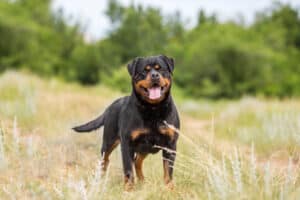
Rottweilers are another breed that is often associated with aggression. They are large, muscular dogs that were originally bred for herding and guarding.
According to Top Dog Tips, Rottweilers are responsible for a significant number of fatal dog attacks each year.
German Shepherds
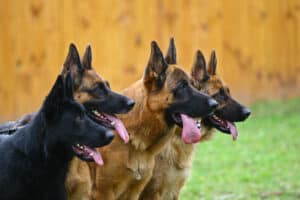
German Shepherds are often used as police and military dogs due to their intelligence and trainability.
However, they can also be aggressive if not properly socialized and trained.
According to PetKeen, German Shepherds are responsible for a significant number of dog attacks each year.
Doberman Pinschers
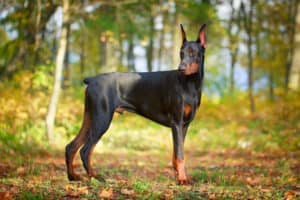
Doberman Pinschers are known for their loyalty and protectiveness, but they can also be aggressive if not properly trained and socialized.
They are powerful dogs that were originally bred for guarding and protection.
According to Top Dog Tips, Doberman Pinschers are responsible for a significant number of fatal dog attacks each year.
Boxers

Boxers are friendly and playful dogs, but they can also be aggressive if not properly trained and socialized.
They are powerful dogs that were originally bred for hunting and fighting.
According to The Dog Snobs, Boxers are responsible for a significant number of dog attacks each year.
Akita Inus
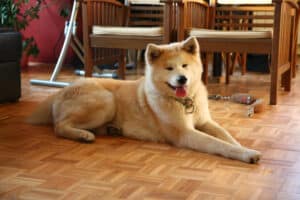
Akita Inus are loyal and protective dogs, but they can also be aggressive if not properly trained and socialized.
They are large, powerful dogs that were originally bred for hunting and guarding.
According to PetKeen, Akita Inus are responsible for a significant number of dog attacks each year.
Chow Chows
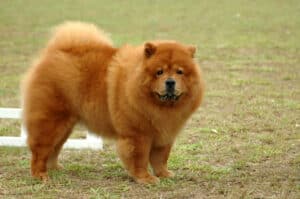
Chow Chows are independent and aloof dogs, but they can also be aggressive if not properly trained and socialized.
They are powerful dogs that were originally bred for hunting and guarding.
According to The Dog Snobs, Chow Chows are responsible for a significant number of dog attacks each year.
Cane Corsos
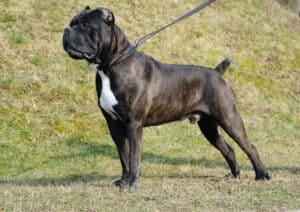
Cane Corsos are loyal and protective dogs, but they can also be aggressive if not properly trained and socialized.
They are large, muscular dogs that were originally bred for hunting and guarding.
According to PetKeen, Cane Corsos are responsible for a significant number of dog attacks each year.
Alaskan Malamutes

Alaskan Malamutes are friendly and playful dogs, but they can also be aggressive if not properly trained and socialized.
They are large, powerful dogs that were originally bred for sledding and hunting.
According to The Dog Snobs, Alaskan Malamutes are responsible for a significant number of dog attacks each year.
Siberian Huskies
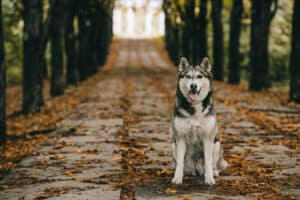
Siberian Huskies are friendly and playful dogs, but they can also be aggressive if not properly trained and socialized.
They are large, powerful dogs that were originally bred for sledding and hunting.
According to PetKeen, Siberian Huskies are responsible for a significant number of dog attacks each year.
Tosa Inus
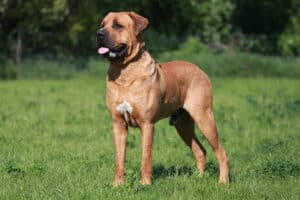
Tosa Inus (Japanese Mastiffs) are loyal and protective dogs, but they can also be aggressive if not properly trained and socialized.
They are large, muscular dogs that were originally bred for fighting.
According to The Smart Canine, Tosa Inus are responsible for a significant number of fatal dog attacks each year.
Dogo Argentinos
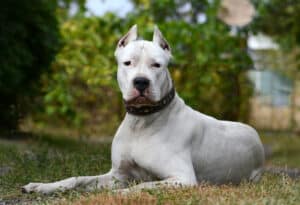
Dogo Argentinos are loyal and protective dogs, but they can also be aggressive if not properly trained and socialized. They are large and powerful.
Factors Contributing to Dangerous Behavior
There are several factors that can contribute to a dog’s dangerous behavior.
While genetics and lineage can play a role, a dog’s environment and upbringing can also have a significant impact on their temperament and behavior.
Owners have a responsibility to train and socialize their dogs properly, and failure to do so can result in aggressive behavior.
Dogs that are not properly socialized may become fearful or aggressive towards humans and other animals, leading to potential attacks.
Physical strength is also a factor to consider. Larger and stronger dogs, such as Rottweilers and Pit Bulls, have the potential to cause more harm in an attack compared to smaller dogs.
However, it is important to note that even smaller dogs can be dangerous and cause harm.
Some breeds are also known for their protective and working dog instincts, which can lead to potentially dangerous behavior if not properly trained and socialized.
For example, German Shepherds and Dobermans are often used as protection dogs, but without proper training, they can become aggressive towards humans.
Pain and illness can also contribute to a dog’s aggressive behavior. Dogs that are in pain or discomfort may lash out, even towards their owners.
It is important to address any medical issues promptly to prevent potential attacks.
It is worth noting that the topic of dangerous dog breeds is controversial, with some arguing that it is unfair to label certain breeds as inherently dangerous.
However, data from organizations such as dogsbite.org show that certain breeds, such as Pit Bulls and Rottweilers, are responsible for a disproportionate number of dog attacks and fatalities in the U.S.
Overall, it is important for owners to take responsibility for their dog’s behavior and take steps to properly train and socialize their pets.
By doing so, they can help prevent potential attacks and ensure that their dogs are safe and friendly members of society.
Role of Training and Socialization
Training and socialization play a crucial role in shaping a dog’s behavior.
While some breeds may have a predisposition towards aggression, proper training and socialization can help prevent aggressive behavior in dogs.
Socialization involves exposing dogs to different people, animals, and environments to help them develop good behavior and social skills.
The socialization period for puppies occurs between 6-14 weeks of age, and it is crucial for their behavioral development.
Positive experiences with other dogs, people, noises, and objects during this time can help prevent fear, anxiety, and aggression in dogs.
Training is also essential for dogs to learn obedience and good behavior.
Dominant dogs may require more specialized training methods to help them understand their place in the family hierarchy and prevent aggressive behavior.
Positive reinforcement training methods, such as rewarding good behavior, are generally more effective than punishment-based training methods.
Owners must take responsibility for their dog’s behavior and ensure they are properly trained and socialized.
Irresponsible ownership, lack of training, and socialization can lead to aggressive behavior in dogs, regardless of breed.
In conclusion, while some breeds may have a predisposition towards aggression, proper training and socialization can help prevent aggressive behavior in dogs.
It is essential for owners to take responsibility for their dog’s behavior and ensure they are properly trained and socialized to prevent incidents of aggression.
Statistics and Studies on Dog Attacks
According to a study conducted by the American Animal Hospital Association (AAHA), pit bulls were responsible for the highest percentage of reported dog bites across all the studies (22.5%), followed by mixed breeds (21.2%), and German Shepherds (17.8%) [1].
Mixed-breed dogs and pit bulls were found to have the highest relative risk of biting, as well as the highest average damage per bite.
Another study conducted by DogsBite.org identified breeds of dogs involved in U.S. attacks between 2005 and 2017.
The study found that pit bulls were responsible for the majority of fatal attacks, followed by Rottweilers, German Shepherds, and Huskies [2].
Since 2016, at least 65 different breeds and mixed breeds have been involved in fatal dog attacks in the U.S. including Akita, Boxer, Doberman Pinscher, Great Dane, Labrador Retriever, Mastiff, and many others [3].
As can be seen from the following infographic, the pit bull is still the breed/type of dog responsible for the most fatal attacks with 284 incidents identified, 66 percent of the total [4].
| Breed/Type of Dog | Number of Fatal Attacks |
|---|---|
| Pit Bull | 284 |
| Rottweiler | 45 |
| German Shepherd | 20 |
| Mixed Breed | 17 |
| American Bulldog | 15 |
| Mastiff/Bullmastiff | 14 |
| Husky | 13 |
| Unknown | 12 |
| Boxer | 11 |
| Other | 49 |
It is important to note that not all dog attacks result in fatalities.
According to a report by the Centers for Disease Control and Prevention (CDC), approximately 4.5 million dog bites occur in the United States each year, and about 800,000 of those bites require medical attention [5].
Overall, while certain breeds may be more prone to aggression or have a higher risk of biting, it is important to remember that any dog has the potential to bite and cause harm.
Responsible pet ownership, proper training, and socialization can go a long way in preventing dog attacks.
[3] https://www.fataldogattacks.org/
[4] https://www.statista.com/chart/15446/breeds-of-dog-involved-in-fatal-attacks-on-humans-in-the-us/
[5] https://www.cdc.gov/features/dog-bite-prevention/index.html
Roles and Uses of These Breeds
Dogs have been known to play various roles in human society, including serving as companions, hunters, and protectors.
Some breeds are specifically trained to perform tasks that require a high level of intelligence, strength, and loyalty.
Dangerous dog breeds are often used as guard dogs, protection dogs, working dogs, and police dogs.
Guard dogs are trained to protect their owners and property from intruders. They are often large breeds, such as the German Shepherd, Doberman Pinscher, and Rottweiler.
These breeds are known for their loyalty and protective nature, making them ideal for guarding homes, businesses, and other properties.
Police dogs are trained to assist law enforcement officers in various tasks, such as tracking criminals, sniffing out drugs, and detecting explosives.
These dogs are often German Shepherds, Belgian Malinois, and Dutch Shepherds.
They are highly intelligent and have a strong work ethic, making them valuable assets to police forces around the world.
Sled dogs are breeds that are specifically trained to pull sleds in cold climates. These dogs are often Siberian Huskies, Alaskan Malamutes, and Samoyeds.
They are highly adaptable to cold weather conditions and have a strong work ethic, making them ideal for long-distance sled races and expeditions.
Protection dogs are breeds that are trained to protect their owners from physical harm. These dogs are often German Shepherds, Doberman Pinschers, and Rottweilers.
They are highly intelligent and have a strong sense of loyalty, making them ideal for protecting high-profile individuals and their families.
Working dogs are breeds that are specifically trained to perform tasks that require a high level of intelligence and physical ability.
These dogs are often German Shepherds, Belgian Malinois, and Labrador Retrievers.
They are highly adaptable and can be trained to perform a wide range of tasks, such as search and rescue, bomb detection, and therapy work.
In conclusion, dangerous dog breeds are often used for various roles and purposes in human society.
They are highly intelligent, loyal, and protective, making them ideal for tasks that require a high level of skill and dedication.
Whether as guard dogs, police dogs, sled dogs, or working dogs, these breeds play an important role in our lives and deserve our respect and admiration.
Conclusion
Determining the most dangerous dog breed is a complex issue that involves many factors.
While some breeds have a reputation for being dangerous, it’s important to remember that every dog is an individual and can behave differently based on their environment and upbringing.
Based on the research conducted, it is clear that several breeds are associated with a higher risk of aggression and attacks.
These include the Rottweiler, Pit Bull, and German Shepherd.
However, it’s important to note that not all dogs of these breeds are dangerous, and many can be well-behaved and loving pets with proper socialization and training.
It’s essential to understand that aggression in dogs can result from a variety of factors, including poor breeding, lack of socialization, abuse, and neglect.
To prevent dog attacks, it’s crucial to educate owners on responsible pet ownership and provide resources for proper training and socialization.
Ultimately, the responsibility for preventing dog attacks falls on the owners.
By providing proper care, training, and socialization, owners can help ensure that their dogs are well-behaved and safe around others.
Frequently Asked Questions
What are some of the most dangerous dog breeds?
There is no definitive answer to this question, as different organizations and experts may have different opinions.
However, some dog breeds that regularly show up on dangerous dog breed lists include Pit Bulls, Rottweilers, German Shepherds, Doberman Pinschers, and Huskies.
What breeds of dogs are known for their aggression?
Again, there is no clear consensus on this issue, as aggression can be influenced by a variety of factors, including genetics, training, and socialization.
However, some breeds that are often associated with aggression include Pit Bulls, Rottweilers, Akitas, Chows, and Dalmatians.
Which dog breeds are responsible for the most attacks?
According to some studies, Pit Bulls are responsible for a significant proportion of fatal dog attacks in the United States.
However, it’s important to note that many factors can contribute to such incidents, including the individual dog’s behavior, the owner’s handling and training practices, and the circumstances surrounding the attack.
What are some signs that a dog may be dangerous?
Some signs that a dog may be dangerous or aggressive include growling, snarling, baring teeth, lunging, and biting.
However, it’s important to remember that not all dogs that exhibit these behaviors are necessarily dangerous, and that context and individual behavior should always be taken into account.
How can I protect myself from a potentially dangerous dog?
One of the best ways to protect yourself from a potentially dangerous dog is to avoid approaching or interacting with unfamiliar dogs, especially those that appear to be aggressive or agitated.
It’s also important to be aware of your surroundings and to stay alert for signs of danger, such as barking or growling.
What should I do if I encounter a dangerous dog?
If you encounter a dangerous dog, it’s important to remain calm and avoid making sudden movements or loud noises that could provoke the animal.
Try to put a barrier between yourself and the dog, such as a tree or a fence, and slowly back away while keeping an eye on the dog’s behavior.
If the dog attacks, try to protect yourself by using an object such as a stick or umbrella to defend yourself, or by curling into a ball and protecting your face and neck.

